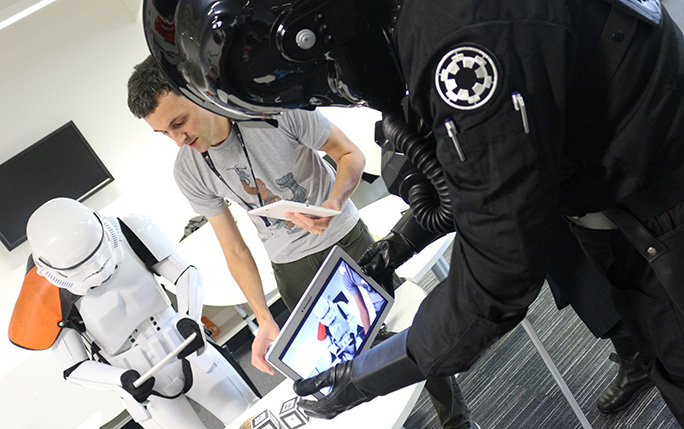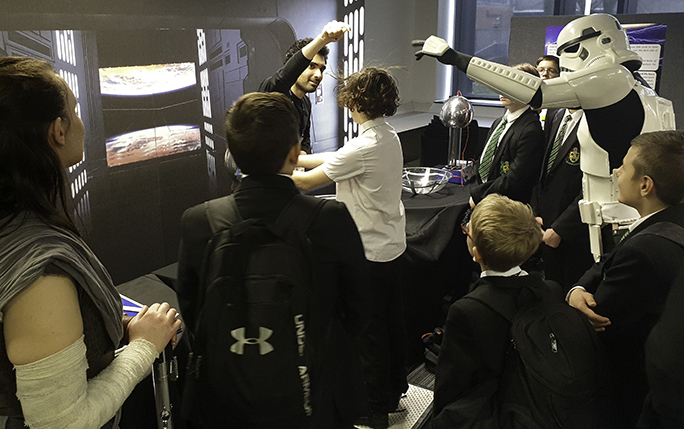The Physics of Star Wars: Creative Teaching in Times of Lockdown

Han Solo, Princess Leia, and Luke Skywalker, might have understood very well how oppressive it feels to be under lockdown when they found themselves trapped inside a trash compactor in Star Wars Episode IV: A New Hope.
The unprecedented situation created by the pandemic has changed dramatically our ways of working and going about our daily lives. In particular, the closure of schools during the lockdown has challenged parents and teachers to find innovative ways to keep children active, and many of them have turned to online resources in order to minimise the disruption to the students’ education.
The Head of the Quasar Group and coordinator of the OMA network, Prof Carsten P Welsch, has stepped up to the challenge by sharing online the educational materials created for the celebrated series of Physics of Star Wars events. The ideas were published in Teaching Times, an online magazine popular among education professionals, where teachers can find classroom resources.
In the article, Professor Welsch, a declared Star Wars fan, explains how Star Wars fiction can help students to better understand the developments happening in accelerator science: “The Physics of Star Wars provides a strong theme for engaging students with advances in accelerator science, and provides an opportunity to explore what is science and what is fiction in the famous films.”
Based on the experiences of the Quasar group with schools in the North West, the article shares their ideas and resources to help others to explore a number of areas in the curriculum using the Star Wars theme. The aim is to show students in years 7-9 how futuristic technologies, brought to life in the movies, may potentially become possible with current developments in accelerator science.

Feeling the electrostatic force around a Van de Graaff generator.
The activities use the topics of space travel, light sabres and droids to explain concepts like the speed of light, sound propagation, and machine learning. The learning and teaching materials are described in detail so that teachers can take these ideas directly into the classroom. These include a salad-bowl accelerator, the augmented reality accelerator acceleratAR, and the egg-drop challenge. Additional information explain in more depth how these fundamental concepts relate to accelerator research.
The demonstrations and science content can be easily adapted to different year groups and adjusted to various class sizes – small groups benefit from giving all pupils the opportunity to gain hands-on experience, whilst larger groups are shown the demonstrations and are then engaged in discussions.
Professor Welsch says: “I hope that these suggestions for science lessons with a Star Wars spin will prompt teachers to find exciting new ways to engage their pupils with this emerging area of science discovery.”
The article can be found here: